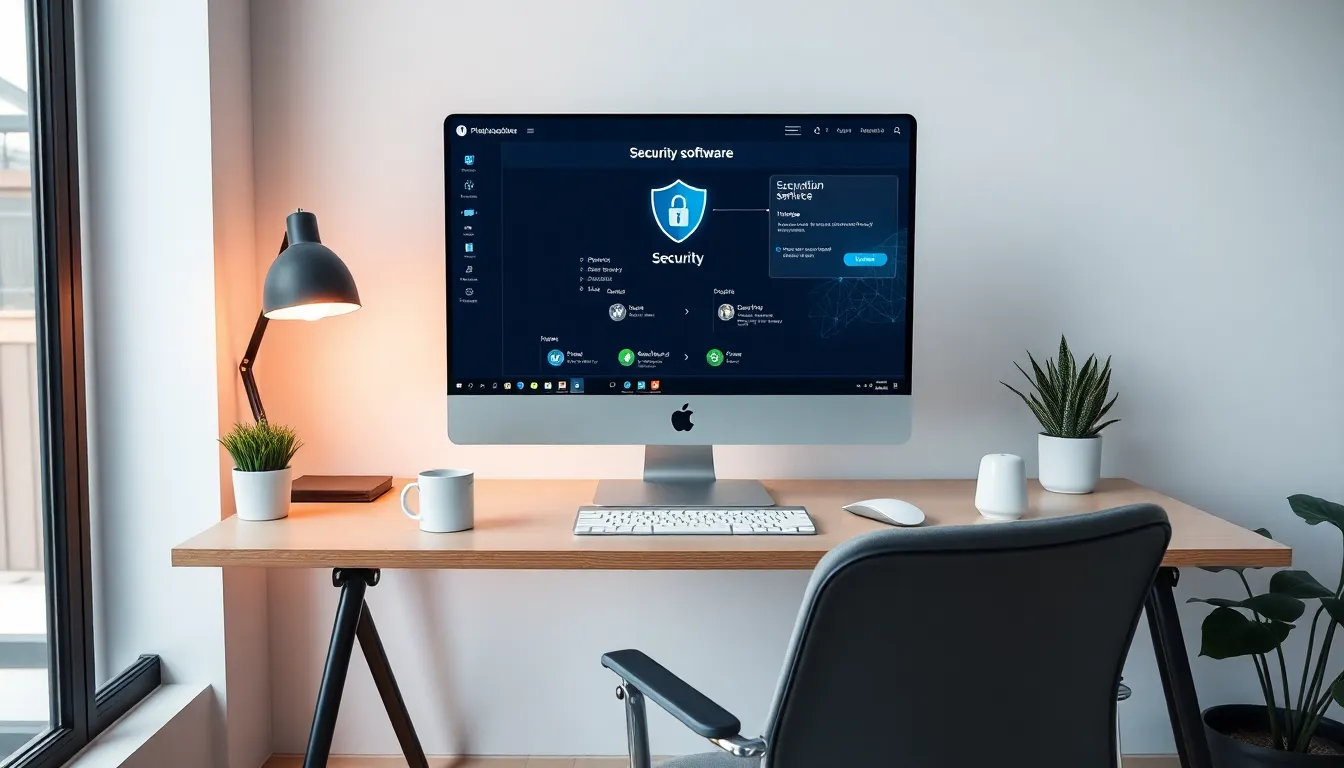In a world where cyber threats lurk around every digital corner, choosing the right security software is like picking the best bodyguard for your data. With hackers sharpening their tools and malware becoming more cunning, it’s time to armor up and ensure your devices are safe from prying eyes. But don’t worry; finding the best security software doesn’t have to feel like searching for a needle in a haystack.
Table of Contents
ToggleOverview of Security Software
Security software comprises various tools designed to protect devices and data from cyber threats. These tools include antivirus programs, firewalls, antimalware, and intrusion detection systems. Each plays a crucial role in maintaining digital safety.
Antivirus programs detect and remove malicious software. This kind of software scans files and applications, identifying threats before they compromise system integrity. Firewalls serve as barriers, controlling incoming and outgoing network traffic to prevent unauthorized access.
Ransomware protection remains essential in today’s landscape. Security software often includes features specifically tailored to detect and mitigate ransomware attacks, which can severely disrupt operations or result in data loss.
Moreover, premium security suites frequently combine these functionalities in a single package. Features like a virtual private network (VPN) enhance online security by encrypting internet traffic, offering additional privacy during browsing sessions.
User-friendly interfaces are a common characteristic of top security software. They simplify configuring and managing settings, making it accessible for both beginners and advanced users. Regular updates ensure that the software remains effective against new threats, as cybercriminals continuously evolve their tactics.
Selecting the right security software requires careful consideration. Users should assess their specific needs, such as the number of devices to protect and the nature of their browsing habits. Comprehensive evaluations often lead to informed choices that enhance overall cybersecurity.
Key Features to Consider

Selecting security software requires evaluating specific features that contribute to effective protection. Important aspects include malware protection, firewall capabilities, and user interface usability.
Malware Protection
Malware protection serves as a primary defense against unwanted software. Programs should detect, quarantine, and eliminate viruses, worms, and spyware. Many top solutions also offer real-time scanning, actively monitoring devices for potential threats. Comprehensive malware protection includes behavior-based detection, flagging suspicious activity before it causes harm. Providers should regularly update their malware definitions to counter emerging threats. A robust solution supports various operating systems and devices, ensuring seamless protection across platforms.
Firewall Capabilities
Firewall capabilities are essential for safeguarding network traffic. A strong firewall monitors incoming and outgoing data, blocking unauthorized access. Effective solutions often feature configurable settings, allowing users to customize rules based on their needs. Multi-layered firewall systems enhance security by filtering network connections at different levels. Users benefit from features like intrusion detection systems, which identify and respond to potential breaches. Reliable firewalls also provide logs and alerts, helping users track and respond to suspected attacks.
User Interface and Usability
A user-friendly interface enhances usability and accessibility. Security software should present clear navigation, empowering users to easily access key features. Well-organized menus and straightforward settings reduce the learning curve for beginners. Feedback options, such as notifications and alerts, keep users informed about potential issues. Intuitive design elements like drag-and-drop functionality streamline processes, encouraging regular software use. Top providers invest in usability testing to ensure their interfaces meet user expectations.
Top Picks for Best Security Software
Choosing effective security software involves evaluating various options. The following selections stand out based on functionality, user experience, and overall protection.
Software 1: Overview and Pros/Cons
Norton 360 offers comprehensive protection against malware and ransomware. Benefits include robust antivirus shields, a built-in VPN, and identity theft protection. Users enjoy an intuitive interface and regular updates. Some drawbacks include higher pricing compared to competitors and potential system slowdown during scans.
Software 2: Overview and Pros/Cons
McAfee Total Protection excels in providing multi-device support for families and businesses. Notable features comprise advanced firewall settings, webcam protection, and safe browsing tools. The user-friendly dashboard simplifies navigation. On the downside, the software can be resource-heavy and includes a steep learning curve for new users.
Software 3: Overview and Pros/Cons
Bitdefender Antivirus Plus combines strong malware detection with a lightweight design favored by performance-oriented users. This software includes real-time data protection and a password manager. Customers appreciate the excellent threat detection rates. However, its interface can be overwhelming for some users, particularly those unfamiliar with security programs.
Comparisons and Pricing
Evaluating security software involves comparing features and prices. Norton 360 offers a subscription starting at $39.99 per year, focusing on comprehensive protection. Its built-in VPN and identity theft protection appeal to users needing extensive cybersecurity. On the other hand, McAfee Total Protection is available for around $29.99 annually. This option supports multiple devices, making it ideal for families or users with several gadgets.
Bitdefender Antivirus Plus starts at $23.99 per year, focusing on strong malware detection and a lightweight application. Some may find its interface overwhelming, despite its effective performance. Comparatively, Kaspersky Total Security costs approximately $49.99 annually for similar features, including privacy protection and cloud storage, catering to users needing a broad range of services.
User reviews highlight pricing differences based on package options. Most software solutions offer tiered pricing, with premium features available at higher tiers. A basic plan typically includes essential malware protection, while advanced plans provide added security layers, like VPN access or password management.
In comparisons, ease of use remains crucial. Some users favor software with intuitive interfaces, while others prioritize robust security over usability. Price points may vary depending on functionality, so users should carefully consider their needs. Organizations often benefit from volume licensing discounts, reducing overall expenditure when purchasing for multiple users.
Conducting thorough research helps users identify the best fit, ensuring each solution meets their specific requirements without overspending.
Choosing the right security software is essential for protecting personal data and devices from evolving cyber threats. With various options available it’s important to assess individual needs and preferences. The right solution can provide peace of mind while ensuring a secure online experience.
Top security software offers features such as malware protection firewalls and user-friendly interfaces making them accessible for everyone. Regular updates and comprehensive protection are key factors to consider.
By taking the time to research and compare different products users can find the best fit for their requirements without overspending. Prioritizing digital security will lead to a safer online environment and safeguard valuable information.




